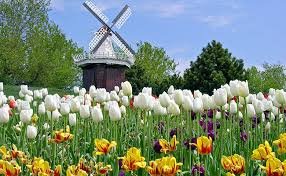The architecture of Chinese palaces has always been a symbol of imperial power, cultural heritage, and the refinement of a civilization that spans thousands of years. Over the centuries, China’s palatial architecture has undergone various transformations, with significant influence from foreign cultures, especially as dynasties interacted with neighboring regions and foreign powers. These influences have been reflected in the design, layout, and construction of royal palaces, shaping their aesthetics and functionality. This article explores how foreign cultures impacted the architecture of Chinese palaces, particularly in terms of construction techniques, decorative styles, and spatial organization.
1. Early Foreign Influences: Central Asia and the Silk Road
In the early years of Chinese history, before the formation of unified dynasties, the vast expanse of the Silk Road acted as a bridge for the exchange of goods, ideas, and cultures. Central Asia, a region that sat at the crossroads of various nomadic tribes, had a profound impact on early Chinese palace architecture. During the Han Dynasty (206 BCE – 220 CE), when China began its interactions with the West, the use of exotic materials and foreign styles began to appear in palace designs.
One of the first major influences was from the Central Asian nomads, particularly the Scythians and the Parthians, who brought with them innovations in construction techniques. The use of large wooden beams, decorative metalwork, and an emphasis on open courtyards—elements that were foreign to traditional Chinese architecture—began to emerge in the palaces of the Han rulers. These influences would grow more pronounced as China established deeper political and cultural ties with foreign territories through the Silk Road.
Notably, the design of Han palaces, like the one built by Emperor Wu in Chang’an (modern-day Xi’an), began to reflect more open and expansive designs compared to earlier Chinese palaces. The use of columns, larger courtyards, and open spaces was likely inspired by architectural styles from the Western regions, which had more of a focus on utility and space.
2. The Mongol Influence: The Yuan Dynasty
The Mongol invasion and the establishment of the Yuan Dynasty (1271–1368) brought one of the most significant foreign cultural shifts in the history of Chinese architecture. The Mongols, under Kublai Khan, imposed their own style and preferences on the palatial designs of China, marking a stark departure from traditional Chinese architectural forms. The Mongols’ nomadic heritage was influential in how they approached the design and construction of palaces.
The Mongol influence on palace architecture was particularly evident in the capital city of Dadu (modern Beijing), where Kublai Khan constructed the Yuan Dynasty’s imperial palace. Unlike the previous Chinese palaces, which emphasized axial symmetry and hierarchical organization, the Yuan palaces were more open and lacked the rigid formality seen in earlier structures. The Mongols, accustomed to vast open spaces and mobile tent-based structures, incorporated large courtyards and gardens into their palaces, reflecting their more fluid and mobile lifestyle.
Additionally, the Mongol rulers favored lavish and exotic materials, such as silk and brocade from Central Asia, precious stones, and imported woods from Southeast Asia. The decoration of Yuan palaces also drew from Persian, Central Asian, and Tibetan traditions, which were blended with Chinese motifs. The use of intricate Islamic tilework, Persian carpets, and the Mongol custom of colorful textiles in the interior decoration was another significant foreign influence that shaped Yuan palace architecture.
3. The Jesuit Influence: The Qing Dynasty
Perhaps one of the most noticeable foreign influences on Chinese palace architecture came during the Qing Dynasty (1644–1912). This was a period of increasing contact between China and Western powers, especially through the arrival of Jesuit missionaries. These missionaries, who had been sent by European powers, played a crucial role in bridging the gap between China and Europe, bringing with them not only religious ideas but also artistic and architectural knowledge.
During the reign of the Kangxi Emperor (1662–1722), the Qing court began to adopt several Western architectural elements, which were incorporated into the design and decoration of the imperial palaces. The most notable example of this is the Yuanming Yuan (Old Summer Palace) in Beijing, which was heavily influenced by European and Jesuit designs.
The Jesuits, under the patronage of the Qing emperors, introduced the concept of European-style gardens, fountains, and pavilions into Chinese palace design. The Yuanming Yuan, constructed by the Qianlong Emperor in the 18th century, was a stunning example of how Western and Chinese styles could be harmoniously integrated. The palace featured a combination of Chinese garden design with elements of Baroque and Rococo architecture, including grandiose fountains, intricate sculptures, and symmetrical pathways, all of which were foreign to traditional Chinese palace architecture.
Moreover, Jesuit missionaries were also instrumental in introducing advanced European engineering techniques, including the development of hydraulics for the palace gardens. This knowledge helped create the impressive water features and elaborate garden layouts that defined the beauty of the Yuanming Yuan.
4. Western Architectural Styles in the 19th Century: The Opium Wars and Foreign Encroachment
The 19th century was marked by increasing foreign influence in China, especially during the period following the Opium Wars (1839–1842 and 1856–1860). After China’s defeat in these wars, the Qing Dynasty was forced to open up several cities to foreign trade and diplomacy. Foreign diplomats, merchants, and missionaries began to build their own enclaves in major Chinese cities, introducing new architectural styles that would eventually influence the design of Chinese palaces.
One of the most direct impacts of foreign influence on Chinese palace architecture during this period was the construction of the foreign legations in Beijing, particularly in the aftermath of the Second Opium War. These legations, built by the British, French, and other European powers, were designed in Western styles, with buildings that reflected the neoclassical and Victorian architectural movements of Europe. These foreign structures, juxtaposed against traditional Chinese buildings, showcased the stark contrast between the architectural styles of East and West.
Although the Qing emperors largely retained traditional Chinese architectural practices for the imperial palace, the influence of Western styles became more apparent in the construction of royal buildings outside the Forbidden City. The Chinese imperial court began to adopt European-inspired elements, such as glass windows, Western-style roofs, and even furniture, which contrasted with the traditional Chinese wooden interiors.
Additionally, the Qing court’s engagement with foreign artists and architects led to the inclusion of Western-style paintings, sculptures, and furniture in palace interiors, further signaling the influence of foreign cultures.
5. The 20th Century: The Decline of Imperial Palaces and the Introduction of Modern Architecture
As China entered the 20th century, the fall of the Qing Dynasty in 1912 marked the end of imperial rule. The Republican era saw a major shift in architectural preferences, as Western and modernist styles began to dominate both public and private buildings. The fall of the last emperor, Puyi, marked a final shift in the use and function of the imperial palaces. Many of the imperial palaces were transformed into museums or government buildings, reflecting the growing influence of Westernization in China.
The collapse of the imperial system brought a decline in the use of traditional Chinese palace designs. During this period, foreign architecture, particularly European neoclassical and modernist styles, became more prominent. The architecture of government buildings and institutions, such as the Nationalist government’s Presidential Palace in Nanjing, reflected these new global influences. The impact of foreign cultures in this period was profound, as Western and modern architectural styles became a defining feature of new buildings and urban developments across China.
6. Conclusion: A Fusion of Cultures
The influence of foreign cultures on Chinese palace architecture has been profound and multifaceted. From the Central Asian nomads during the Han Dynasty to the Mongol invasions and the Jesuit contributions during the Qing Dynasty, the architectural styles of foreign powers and cultures have shaped the design and aesthetics of Chinese palaces. The Yuan Dynasty, in particular, stands out for its integration of Mongol and Central Asian influences, while the Qing Dynasty’s exposure to European styles, especially through the Jesuit missions, had a lasting impact on palace gardens and interior design.
Even during the decline of the imperial system, foreign influences continued to shape the architectural landscape of China, as seen in the 19th and 20th centuries. In modern times, the fusion of foreign and indigenous architectural styles in China’s urban development highlights the ongoing interplay between East and West. Ultimately, the history of foreign influence on Chinese palace architecture reflects China’s rich and dynamic cultural heritage, where foreign elements were not merely imposed but were skillfully blended into the local tradition, creating a unique architectural legacy.




